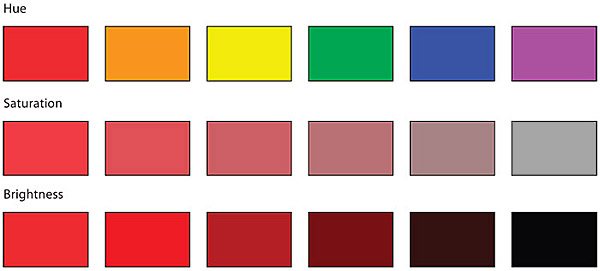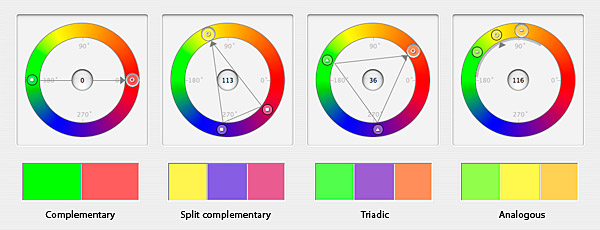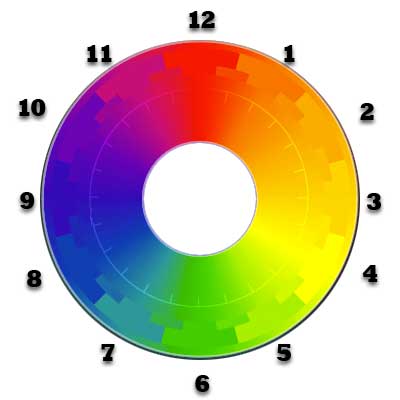Readings
These slides cover
- Horton and Lynch, Web Style Guide 338-39
Two Color Models
A color model is a systematic way of defining and re-creating the colors we see in the real world. Over the centuries, designers have developed many different models. In part, these differences are the result of changing technology: the different qualities of paint, printed ink, and pixels require distinct ways of defining and reproducing particular colors.
In the "Color Terminology" sidebar, Horton and Lynch summarize two color models often used in digital media (338-39).
- Red, Green, Blue, or RGB
- Hue, Saturation, Brightness, or HSB
The RGB model comes directly from the ways that pixels work. Each pixel in a screen can glow at different intensities of these three colors. By dialing up or down the intensities of red, green, and blue—blending these three colors in different ratios—a single pixel can be made to glow in any one of millions of distinct colors.
The HSB model is a little more complicated, but it is frequently used by designers to talk about color.
HSB Components

- Hue is what people on the street are referring to when they say "color" (e.g. yellow, purple, green, etc.)
- Saturation is a measure of a color's grayness. The pure hue is fully saturated (100%); as you desaturate, the color becomes more and more gray
- Brightness measures how close to black a color is. Darkening a color (by moving closer to 0% brightness) adds black (not gray!) to the color
Color Harmony
Color Harmony simply means a group of colors that together produce a pleasing effect.
A "harmonious color scheme" depends on the balance all three properties (hue, saturation, and brightness) of each chosen color. About a dozen different approaches to color harmony are commonly used today. The Web Style Guide includes a summary image including four of these approaches on the bottom of page 339.
Color Harmony continued (339)

For our class, you will need to know the four in our textbook, plus one more:
- monochromatic color harmony
- complementary color harmony
- split-complementary color harmony
- triadic color harmony
- analogous color harmony
A Reminder: The Color Wheel
The color wheel on this slide is the one we will use in class and that you will see on exams.

Color Harmony continued
Like individual colors, particular combinations of colors communicate different emotions.
Complementary color schemes, for example, often feel energized and dynamic. For this reason, sports teams often choose complementary colors like orange and blue or purple and yellow (or gold).
Analogous color schemes, in contrast, often feel more calm, static, and understated.
